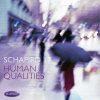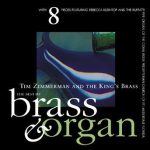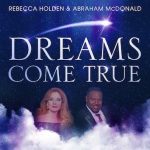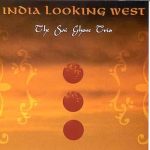New Shoes: Kind of Blue at 60 – Schapiro17
TWO CD SET
New Shoes: Kind of Blue at 60 – Schapiro 17
CLICK HERE to meet the whole band
Schapiro 17 re-imagines Davis’ legendary release…turning the music into virtually new compositions using Miles’ tunes as the starting point. He does this most obviously, by translating the lean sound of the sextet that assembled in the spring of 1959 into the wide-screen colors of a jazz ensemble in the tradition of the Ellington and Basie bands of the ’40s, and of Gil Evans’ work with Miles on records like “Birth of the Cool”, “Miles Ahead”, “Porgy and Bess” and “Sketches of Spain”.
Sometimes the sound hints at the sort of orchestration you hear on Charles Mingus records like “Ah-Um”, recorded the same year as “Kind of Blue” and in the same room (the Columbia “church” studio on East 30th street). That Schapiro and many of his band members took part in the BMI workshops taught by Jim McNeely (himself influenced by the founding instructor of the workshop Bob Brookmeyer), accounts in part for the unique inheritance of this tradition of orchestrated jazz. In Schapiro’s scores this is not at all a form of antiquarianism but of pushing that style to the outer limits of invention without ever ceasing to swing.
The Miles tunes are intercut with original charts, six pieces all called “Boiled Funk.” The title is a rearrangement of the letters ‘k i n d o f b l u e’, and while the resulting music is not exactly “funky,” the anagram is a good way to think about what it means to make new things from a set of given elements.
The whole recording is in a fundamental way true to the spirit of Miles’ restless and mercurial inventiveness as he was, in addition to so many other things, a powerful and original interpreter of other people’s tunes.
TRUMPETS | BRYAN DAVIS,ANDY GRAVISH, EDDIE ALLEN, NOYES BARTHOLOMEW
TROMBONES | DEBORAH WEISZ, ALEX JEUN, NICK GRINDER, WALTER HARRIS
SAXOPHONES | ROB WILKERSON (DISC 1, 1-4), BEN KONO (DISC 1, 5; ALL OF DISC 2), CANDACE DEBARTOLO, PAUL CARLON, ROB MIDDLETON, MATT HONGPIANO | ROBERTA PIKET
GUITAR | SEBASTIAN NOELLE
BASS | EVAN GREGORDRUMS
DRUMS | JON WIKAN
REVIEW:
SCHAPIRO 17/New Shoes-Kind of Blue at 60: A little disappointed with these records that ‘finish’ unfinished works Miles left behind? This set rounds up a big band to extrapolate on the Miles opus and amplify it rather than diminish it. Taking the original themes and interspacing them among tracks inspired by them, this all star aggregation does well by themselves as well as the material. This is the innovative and inspired new look at “Kind of Blue’ that you’ve been waiting for. Hot stuff.
-Chris Spector for Midwest Record
REVIEW:
Composer and arranger Jon Schapiro celebrates the 3 score anniversary of Miles Davis’ legendary Kind of Blue album by taking each tune, tweaking it and giving it new dimensions and colors. With his 17 piece ensemble that includes Roberta Piket/p and Nick Grinder/tb, Schapiro also brings in some of his own tunes which include “inspirations” from other tunes by Miles Davis. Of the five classic tunes, “So What” is painted with attractively darker hues and by gurgling reeds, “Blue In Green” broods in a melancholy fog, “All Blues” is coaxed along by Jon Wikan’s ride cymbal, the trumpets hover on “Freddy Freeloader” and a Gil Evansy’ sophistication floats for “Flamenco Sketches”. Roberta Piket’s “Foild Bunk” is an impressionistic delight, the team gets into a Mingusy mood with some palpable baritone sax on “Boiled Funk 4” and the rhythm team shuffles to a bopping “Boiled Funk/Theme” with bassist Evan Gregor carrying the ball over the goal line. Impressive salute without being imitative.
-George Harris for Jazz Weekly
REVIEW:
For most listeners, Miles Davis’ Kind Of Blue is less an album than an icon, the sort of work so indisputably great that genuflection is the only conceivable response. But for many jazz musicians, Kind Of Blue is closer to scripture, in the sense that it has been a source of guidance and inspiration almost from the start.
Composer/arranger Jon Schapiro falls into the latter category, and New Shoes: Kind Of Blue At 60 is a sort of creative commentary on that text, a sermon on five songs, if you will. In addition to offering big-band versions of Kind Of Blue’s material, he also has six KoB-inspired pieces of his own, an itchily propulsive cycle he calls “Boiled Funk,” the title being an anagram of “Kind Of Blue.” There’s also a seventh track, “Foiled Bunk,” in which pianist Roberta Piket offers a virtuosic, two-handed deconstruction of Schapiro’s “Boiled Funk” motifs.
If all that sounds a tad Talmudic, don’t worry—Schapiro understands the centrality of the blues to Kind Of Blue, and never lets the music get arcane or cerebral. It helps that his ensemble is powered by a first-rate rhythm section, particularly Piket and Jon Wikan, who is rapidly becoming one of the most astutely swinging big band drummers in jazz today. But Schapiro’s writing is what really does the trick, fleshing out his ideas through lean, deftly coloristic ensemble passages that manage to convey small-band dynamics with a big-band toolkit. Gil Evans is an obvious touchstone here, particularly in the way Schapiro uses high-note trumpet, but there’s also a bit of George Russell in the way he uses modal harmony to maintain a sense of blues in even the densest ensemble passages.
Purists might bristle at some of the liberties taken here—for instance, the way Schapiro’s arrangement of “So What” playfully morphs the bass-line melody. But this isn’t meant for fundamentalists. Instead, by showing that creative work still can be built off of Miles’ model, Schapiro and company pay the best possible tribute: They make Kind Of Blue kind of new.
-J.D. Considine for DOWNBEAT
REVIEW:
“This double CD set features a 17-piece band with beautiful orchestrations based on five tunes from Miles Davis’ Kind Of Blue album. Those familiar tunes are interspersed with some originals, which by themselves would have made a very satisfying recording. …this is a debut release for this 22-year-old whose maturity is hard to believe.” -CADENCE Magazine
REVIEW:
This celebration of the 60th anniversary of Miles Davis’ Kind of Blue not only keeps alive its spirit and quiet power but completely reworks and reimagines it with new harmonic colors, textures, rhythms and even melodic organization. Going even further, leader Jon Schapiro has surrounded the original tunes by five new compositions, each entitled “Boiled Funk” (anagram for Kind of Blue) plus another play on that title, “Foiled Bunk”, performed and written by pianist Roberta Piket. These smart and inventive compositions extend the tradition of both big band writing and the originality of Davis through the years.
The album opens with “Boiled Funk”, replete with tempo changes and bold solos from tenor saxophonist Paul Carlon, bassist Evan Gregor and trombonist Deborah Weisz. “Foiled Bunk” finds Piket combining openness and thoughtfulness. Her playing leads to “So What”, about which more later.
To flesh out the other “Boiled Funks”: number 2 is sinewy, with a dark solo from soprano saxophonist Rob Wilkerson and ominous sounds from the ensemble; 3 is basically a fiery feature for trumpeter Andy Gravish; 4 returns to number 1 with Charles Mingus- like funk and a hot alto solo by Candace DeBartolo; and 5 is a slow quirky thing that again features Piket.
To the masterwork itself, starting with “So What”. We hear the suggestion of the simple, almost minimalist theme, but Schapiro creates a whole new construction with very complex orchestra writing buoyed by pulsing bass and drums (Jon Wikan) and the powerful way the soloists—particularly trombonist Alex Jeun, Wilkerson and Gravish – soar off and away. “Blue in Green” is also mysterious and dark but suddenly alto saxophonist Ben Kono enters with what feels like a spontaneous cadenza. That comes to fruition as the whole orchestra enters the fray to a more easy-swinging section.
“All Blues” finds its meter broken up and then resectioned among brass and reeds; soloists Carlon, Jeun and Gravish work with the assemblage to make this the quirkiest arrangement of all. An almost breathy “Flamenco Sketches” slowly and quietly develops with a lovely protracted guitar solo by Sebastian Noelle. Finally, “Freddie Freeloader”, while measured, is less ominous and there’s a solo from Gravish that finds him closer to but never imitative of Davis, a thrumming bass solo, an earthy section from Walter Harris on bass trombone and a faster and fluent solo from Carlon. This beautifully realized recording finds stunning inspiration to create a new original.
-Donald Elfman for New York City Jazz Record
REVIEW:
This is a tremendous set… -Robert Rusch, jazz journalist
REVIEW:
I recently spent the best two hours of my life listening to SCHAPIRO17: NEW SHOES: KIND OF BLUE AT 60. The two-disc album, the brainchild of composer/conductor/arranger Jon Schapiro, pays tribute to Miles Davis’ iconic CD, “Kind of Blue, which has just celebrated its 60th anniversary. Schapiro, a member of the BMI Jazz Composers’ Workshop and a long-time professor at Yeshiva University, has headed a big band since 2012. Based in NYC, the band features such stalwart jazz musicians as Brian Davis, Walter Harris, Roberta Piket and Candace DeBartolo–all of whom strut their stuff on SCHAPIRO17.
Schapiro has not just re-arranged five key tunes from “Kind of Blue”–“So What,” “Blue in Green.” “All Blues,” “Flamenco Sketches” and “Freddie Freeloader”–but interspersed them with six original tunes, all called “Boiled Funk.” The result is a score that unites old and new in a fresh-sounding, truly original way.
Some of the tunes on SCHAPIRO17 run for as long as 12 and 14 minutes; others make a statement in less than 3 minutes. At all times, though, the band stays true to the spirit of “Kind of Blue” and to the genius of Miles Davis.
-Willard Manus for Lively Arts
REVIEW:
I get so weary of reading press releases for jazz CDs that claim that the arrangements on said albums are “innovative” when in fact they are nothing of the sort. Far too many modern-day jazz orchestras, in my view, pay little or no attention to the great jazz arrangers who preceded them, whether they be Ellington, Billy Strayhorn, Eddie Sauter, Tadd Dameron, Charles Mingus, George Russell, Shorty Rogers, Gil Evans or the many excellent arrangers who worked for Stan Kenton, among them Gerry Mulligan, Pete Rugolo and Johnny Richards.
But this album, scheduled for release on April 3, is considerable different. Here Jon Schapiro has taken the five pieces that debuted on Miles Davis’ 1959 Kind of Blue album, rewritten them completely in terms of harmony, rhythm and melodic structure, and surrounded them with seven originals—six by him and one by the band’s pianist, Roberta Piket—which bear titles beginning with “Boiled Funk” (or, in the case of Piket’s piece, “Foiled Bunk”), which is an acronym of “Kind of Blue.” At first sight I was a bit skeptical about these because normally, when I see the work “funk,” I expect those kinds of pieces that have a sort of R&B beat to them, complete with a heavy electric bass, but such is not the case here.
Yes, there’s a bit of an R&B feel to the opening Boiled Funk, but both the pulse and the very clever orchestral arrangement are closer in feel to the kind of work that Mingus and Clare Fischer were doing in the 1960s, with brass and reeds often playing together rather than in the established brass-vs.-reeds configuration. Moreover, Schapiro, like Mingus, uses the bass line to move the top line, making it an integrated part of the orchestration, and at the 2:20 mark the tempo relaxes to present an outstanding sax solo over a cushion of mixed brass and reeds. These are real compositions, not just “tunes” thrown together with the usual big-band sound, and it shows. Even the scored improvisation played by the entire trumpet section fits in musically, adding to the progression of the music and not just filling time and space. There’s also a very “dark” feel to this music, with the piano often playing in its low range and the bass trombone very audible in the softer ensembles. And, wonder of wonders, every soloist fits into the surrounding structure rather than just playing for him or herself. Every little bit and piece of this nearly 12-minute-long composition adds to one’s enjoyment as well as to an excitement of discovery. The finale almost has the feel and power of a freight train pulling into a station.
After this extended masterpiece, Piket’s little (3:06) Foiled Bunk almost sounds like a miniature, opening as it does with fairly quiet solo piano playing what sound like sparse, disconnected lines, which then slowly coalesce into something resembling a tune and developed by the pianist. Eventually the music becomes quite complex indeed, with cross-rhythms and pungent crushed chords adding to the mix until it just stops. This is followed by Schapiro’s complete reworking of So What?, opening with more crushed chords from Piket and followed by Gil Evans-like orchestration with Mingus touches. Although I liked the Kind of Blue album, I was attracted to it more for the solo work than for the compositions themselves, and this particular one was so minimal that it almost annoyed me. It does not annoy me here, as Schapiro has substituted rhythmically complex constructions played by the brass and/or reeds in place of the original solo spots, and making much more of an integrated piece of it. Take the solo trombone, for instance, which plays an improvised solo before suddenly becoming a counter-voice to the ensemble that enters immediately after, or the alto sax solo (sounding much like a soprano) that then fits into the more complex ensemble writing. As the alto solo grows in intensity, the background figures begin to charge like a freight train, pushing the music into entirely new directions, which are then temporarily interrupted by a bass solo. The orchestra then takes charge, developing the initially simple theme into a complex web of ideas. The solo piano then returns, playing a simple repeated motif over soft drums, into which the trombone interjects a few wry comments—and the bass trombone is then heard doubling what the piano is playing with the reeds and brass play high-lying, busy figures that interlap almost like a canon. Then, as the bass plays a repeated riff, the drums work out while the orchestra plays increasingly excited brass figures, after which the tempo doubles and the whole band begins to swing. It then comes to a roaring finish at the 14-minute mark.
Following this masterpiece is Boiled Funk 2: Darn of Night, which again opens with solo piano and then alto sax with soft drums and equally soft trombone figures in the background. Even when the band textures become slowly richer, adding a bass clarinet to the mix, the background remains quiet while alto saxist Rob Wilkerson works out. This then blends, magically, into Blue in Green, scored in a similar manner and retaining the dark, mysterious sound of its predecessor. I won’t spoil some of the surprises in this track for you, but they are there albeit much subtler than in So What. One really delightful moment comes when the band stops playing and alto saxist Ben Kono, who replaces Wilkerson on the remainder of the album, comes in with an extempore cadenza that eventually works its way into a secondary theme, backed by the bass, into which a solo trumpet plays a counter-figure, followed by trombone, then other instruments. But since this track lasts over 10 minutes, of course there are other nice things going on here, and the orchestration resembles Mingus mixed with a bit of Gil Evans.
CD 2 opens with Boiled Funk 3: Worth Your While, an uptempo romp that opens with a crackling trumpet solo by Andy Gravish, who dominates this brief (2:26) opening fanfare to the second half of our concert. Amusingly, it stops in the middle of nowhere, followed by low, fluttering figures played by brass and reeds together, again with the bass trombone coming in behind them. This is how Schapiro’s arrangement of All Blues begins. A soft but uptempo drum figure presages the melodic line, its meter broken up and redistributed, played again by a combination of brass and reeds, with pianist Piket sprinkling notes in the background. The piano then drops out as the drums set up a slightly different pace; the trombones play a figure in 3 quarter notes to each two beats in the score, followed by an excellent tenor solo (here sounding almost like an alto) by Paul Carlon. Trombonist Alex Jean then follows while pianist Piket softly plays background figures with rising chromatics à la Strayhorn’s Take the “A” Train. Asymmetric ensemble figures predominate in the second half of this arrangement, constantly catching the listener’s attention and building excitement by Schapiro’s clever use of off-kilter counter-figures. A quirky piano figure played in the bass range also comes and goes, but except for the afore-mentioned solos the second half of this one is built around the extraordinary ensemble writing for the orchestra. We end with the muted brass playing a figure in 3 over the quirky bass-note figure on the piano.
Boiled Funk 4: Old Feet, New Shoes opens with an a cappella baritone sax solo by Matt Hong, to which altoist Candace De Bartolo adds her own comments, then takes over as others enter behind them. This is indeed the funkiest of the Boiled Funk pieces. Schapiro’s scoring here is sparser than on most of the other pieces but very effective nonetheless, creating a lean sound profile on which the soloists skim along while the rhythm section cooks behind them. The pi9ece ends quietly, followed after a brief pause by Flamenco Sketches, one of the more developed tunes from Kind of Blue. Again, Schapiro’s scoring is light and airy at first in this slow-tempo piece, built around a nice extended guitar solo by Sebastian Noelle and, later, orchestral figures that resemble those that Gil Evans wrote for Miles Ahead. These continue to build in volume and intensity; the guitar does so as well, and even (unfortunately) starts playing like a rock guitar, which I could have lived without. (Will someone please tell me why jazz musicians feel this urgent need to incorporate shitty rock sounds into their music?)
Boiled Funk 5: A Smile starts out sounding like anything but a smile. It is strange and mysterious, at times even dark in feeling. Even Piket’s piano solo has menacing undertones, though as it develops she also incorporates some elements of Gospel and soul music. Schapiro’s opening of Freddie Freeloader is even slower but not as dark in feeling, with a nice, Miles Davis-like solo by Andy Gravish along with a Mingus-like bass solo by Kozlov and some nice piano licks by Piket. The whole piece assumes a nice, relaxed, loping sort of beat as it wends its way along. Walter Harris’ bass trombone also solos, tossing in a lick from Santa Claus is Comin’ the Town before he and the whole band quadruple the tempo just in time for Carlon’s glib tenor. Schapiro then creates an interesting counter-melody which is played by the brass for a few measures before the band develops it, then the tempo relaxes for the baritone sax solo. The ensemble then returns, as does Gravish, now quite uptempo himself. The tempo then downshifts to a loping medium tempo for the ride-out.
The final Boiled Funk is another uptempo piece, this time with a less definable melody but nice solos by Piket, Middleton, Carlon, Grinder and Gravish, including a polyphonic passage played by all of them—followed by the ensemble playing in a polyphonic manner.
New Shoes: Kind of Blue at 60 is quite an achievement, in my view one of the finest jazz albums ever recorded. With the sole exception of the rock guitar nonsense, there isn’t a weak moment in the entire enterprise. I am in awe of what Jon Schapiro has done here, and urge you to really listen to it carefully.
-Lynn René Bayley for The Art Music Lounge
REVIEW:
Jon Schapiro, composer/conductor/arranger; Roberta Piket, piano; Sebastian Noelle, guitar; Evan Gregor, bass; Jon Wikan, drums; Trumpets: Bryan Davis, Andy Gravish, Eddie Allen & Noyes Bartholomew. Trombones: Deborah Weisz, Alex Jeun, Nick Grinder & Walter Harris, bass trombone. Saxophones: Rob Wilkerson, Ben Kono & Candace DeBartolo, alto saxophones. Paul Carlon, Rob Middleton, tenor saxophones. Matt Hong, baritone sax.
Last year, in 2019, the highly popular and land-breaking Miles Davis album, “Kind of Blue” celebrated its 60th year anniversary. With that in mind. Conductor/composer/arranger, Jon Schapiro set out to tribute five of the Davis compositions that became classics from this album. In addition, he added his own compositions to offer us a unique look at the Davis influence on jazz and on his own composer/arranger skills. You may remember that the Miles Davis sextet included John Coltrane, Cannonball Adderley, Wynton Kelly and Bill Evans, bassist, Paul Chambers and with Jimmy Cobb on drums. In this recording, Jon Schapiro has arranged for his 17-piece orchestra to explore the Davis jazz standards and his own compositions. They perform with expressive verve and dynamism. On the opening tune, Schapiro’s “Boiled Funk” Paul Carlon takes a memorable solo on tenor-saxophone. It also features trombonist, Deborah Weisz. This straight-ahead, energized composition with the catchy melody and dancing drums sets the standard for what is to follow. The talented arranger plays with time and features his gifted soloists to explore the outer limits of his melodic message. The horns are like a chorus that answer the individual solo players with harmonic energy.
Jon Schapiro has added a composition by the orchestra’s pianist, Roberta Piket, titled “Foiled Bunk.” This second track on the album features Piket’s dynamic skills on the grand piano, solo and classically flavored. This becomes an introduction to the orchestra’s take on the Miles Davis standard, “So What.” It’s certainly painted with a fresh and creative face, showcasing the super talents of Schapiro as a unique and creative arranger. On the standard, “All Blues” Shapiro establishes the familiar melody and stretches out from there, moving out of the realm of jazz waltz and creating an up-tempo and exciting arrangement that features Alex Jeun on trombone and Eddie Allen on trumpet as the solo stars. There is nothing fusty about this orchestrated work. It is modern and creative; effulgent and entertaining. Scheduled for an April 3rd release, this is another gem to add to your big band collection.
-Dee McNeil for Musical Memoirs
REVIEW:
Inventive unpredictable big band jazz Schapiro17 – NEW SHOES/KIND OF BLUE AT 60: This double-CD jazz release is among the most inventive and unpredictable big band jazz sets I’ve ever listened to… the player list is long, so CLICK HERE to meet the whole band.
The album doesn’t release officially until early April, 2020), but you’re going to LOVE their totally unique performance of Miles’ “Blue in Green“… Jon Schapiro’s arrangements are just stellar, and you’ll find yourself spellbound for the entire 10:02 length of the tune.
The opening track, “Boiled Funk“, an original from Schapiro, is upbeat and full of the kind of movement that jazz lovers everywhere will be totally enchanted by the ultra-hip sonic adventure the band creates for you!
On the second CD, “Flamenco Sketches“, will thrill your ears, and have you spinning it again and again… rich and full-bodied recording with vibrant performances all around make it one of the strongest jazz tunes I’ve heard (yet) in 2020.
“Foiled Bunk“, by pianist Roberta Piket, is a tune just MADE for jazz DJ’s… I predict you’ll be hearing this on jazz stations all over the globe… the free-form piano is a perfect segue to “So What“, again – a totally unique arrangement and performance!
There was no question in my mind what my personal favorite tune was going to be… “Boiled Funk 4: Old Feet, New Shoes“, composed by Jon, is jam-packed with rhythm and movement, and some superb alto sax work.
I give Schapiro17 a MOST HIGHLY RECOMMENDED rating, with an “EQ” (energy quotient) score of 4.99… if you love big band jazz – you’ve GOT to HAVE this.
-Dick Metcalf for Contemporary Fusion Reviews
REVIEW:
For those not in the know, New York big band Schapiro 17‘s brand new album re-imagines Miles Davis’ legendary, and ultimately landmark album Kind of Blue by turning the music into virtually new compositions using Davis’ tunes as the starting point.
Here on this stunning new 2CD set New Shoes: Kind of Blue at 60 (out April 10th, 2020 via Summit Classical), Schapiro 17 (led by Jon Schapiro) translate the lean sound of the sextet that assembled in the spring of 1959 into the widescreen colors of a jazz ensemble in the tradition of the Ellington and Basie bands of the ’40s.
CD 1:
1. ‘Boiled Funk’ (11:54)
2. ‘Foiled Bunk’ (3:05)
3. ‘So What’ (14:03)
4. ‘Boiled Funk 2: Dark Of Night’ (3:55)
5. ‘Blue In Green’ (10:02)
CD 2:
1. ‘Boiled Funk 3: Worth Your While’ (2:26)
2. ‘All Blues’ (12:08)
3. ‘Boiled Funk 4: Old Feet, New Shoes’ (5:14)
4. ‘Flamenco Sketches’ (9:52)
5. ‘Boiled Funk 5: A Smile’ (5:41)
6. ‘Freddie Freeloader’ (12:25)
7. ‘Boiled Funk / Theme’ (4:28)
Listening to the new orchestrations, it’s plainly obvious that sometimes the sound hints at the sort of orchestration you hear on Charles Mingus records; such as the brilliant Ah-Um (recorded the same year as Kind of Blue and in the same room – the Columbia church studio on East 30th street).
That Schapiro and many of his band members took part in the BMI workshops taught by Jim McNeely (himself influenced by the founding instructor of the workshop Bob Brookmeyer), accounts in part for the unique inheritance of this tradition of orchestrated jazz.
In Schapiro’s scores this is not at all a form of antiquarianism but of pushing that style to the outer limits of invention without ever ceasing to swing.
The Miles tunes are intercut with original charts, six pieces all called ‘Boiled Funk.’ The title is a rearrangement of the letters k i n d o f b l u e, and while the resulting music is not exactly funky, the anagram is a good way to think about what it means to make new things from a set of given elements.
The whole recording is in a fundamental way true to the spirit of Miles’ restless and mercurial inventiveness as he was, in addition to so many other things, a powerful and original interpreter of other people’s tunes.
Opening with the exquisite piano and horns of ‘Boiled Funk,’ it’s obviously not quite correct to say that New Shoes: Kind of Blues at 60 features arrangements of the five songs on Miles’s album.
Moreover, they are more like entirely new compositions, which happen to take the Miles material as a starting point.
Works such as the pronounced piano work from Roberta Piket on ‘Foiled Bunk,’ the free flowing jam of ‘So What,’ and both the stringent horn work of ‘Boiled Funk 2: Dark of Night’ and the lush swing of ‘Blue In Green,’ all come together to produce a quite magnificent, breezy yet cultured first disc.
The frenetic, yet at all times steadied trumpet work of ‘Boiled Funk 3: Worth Your While’ is a masterful way to open the second disc and is backed seamlessly by the exuberant ‘All Blues,’ the funky horns of ‘Boiled Funk 4: Old Feet, New Shoes,’ and both the lush ‘Flamenco Sketches’ and the gentle, dance hall passion sway of ‘Boiled Funk 5: A Smile.’
The second disc then rounds out with the horn orchestrations of ‘Freddie Freeloader,’ with the finger-snappin’ hipsway of ‘Boiled Funk / Theme’ bringing the new set to a triumphant close.
Musicians: Jon Schapiro (composer, conductor, arranger); Bryan Davis (trumpet); Andy Gravish (trumpet); Eddie Allen (trumpet); Noyes Bartholomew (trumpet); Deborah Weisz (trombone); Alex Jeun (trombone); Nick Grinder (trombone); Walter Harris (bass trombone); Rob Wilkerson (alto saxophone); Ben Kono (alo saxophone); Candace DeBartolo (also saxophone); Paul Carlon (tenor saxophone); Rob Middleton (tenor saxophone); Matt Hong (baritone saxophone); Roberta Piket (piano); Sebastian Noelle (guitar), Evan Gregor (bass)l; and Jon Wikan (drums).
-Anne Carlini
REVIEW:
REVIEW:
A tribute to Miles Davis’ Kind Of Blue recording, for its 60th anniversary Jon Schapiro has assembled a 17 piece orchestra to rework the legendary record, while also injecting 7 originals across the double disc.
The Schapiro original “Boiled Funk” starts the listen with a bouncy, playful setting before calming down as horns enter the unpredictable atmosphere, and “Foiled Funk”, by Roberta Piket, follows wth piano acrobatics in the highly intricate delivery.
Of the Miles Davis tunes, “So What” flows with dynamic interplay between the keys, brass and quick percussion as the trombone solos shine bright, while “Blue In Green” recruits vibrant big band melodies with much emphasis on saxophone as it moves from swing friendly to ballad territory. The best Davis selection and album highlight, “Flamenco Sketches”, then brings us nearly 10 minutes of spirited guitar work amid the bold brass fun.
Disc 2 highlights of the originals include the playful jazz and frisky rhythm of “Boiled In Funk 4: Old Feet, New Shoes”, as well as the busy, ultra melodic exit “Boiled Funk/Theme”, which benefits greatly from the agile trombones.
Both an arranger and composer and a current professor, Schapiro and company place a thriving new twist on classic tunes while also staying true to their creative spirit, and the originals display much ingenuity, too.
-Takeeffectreviews.com
REVIEW:










